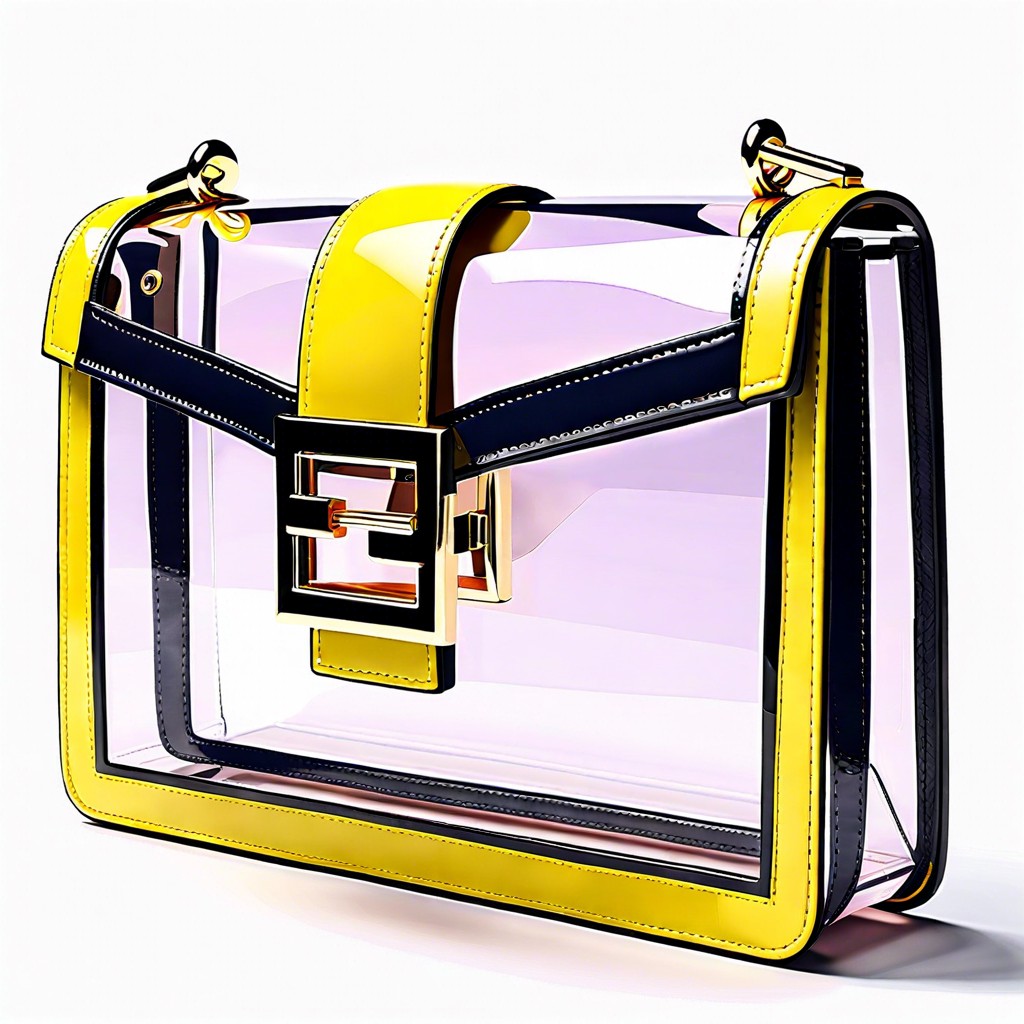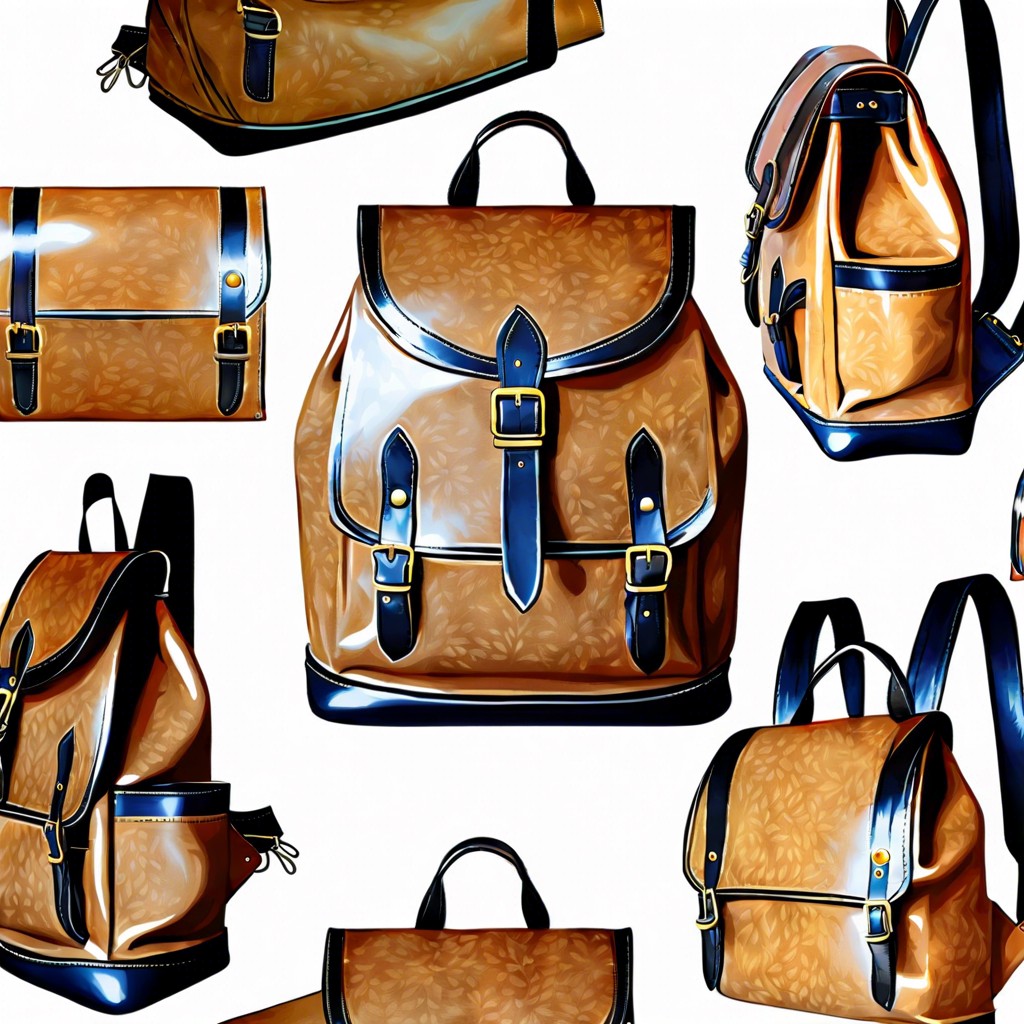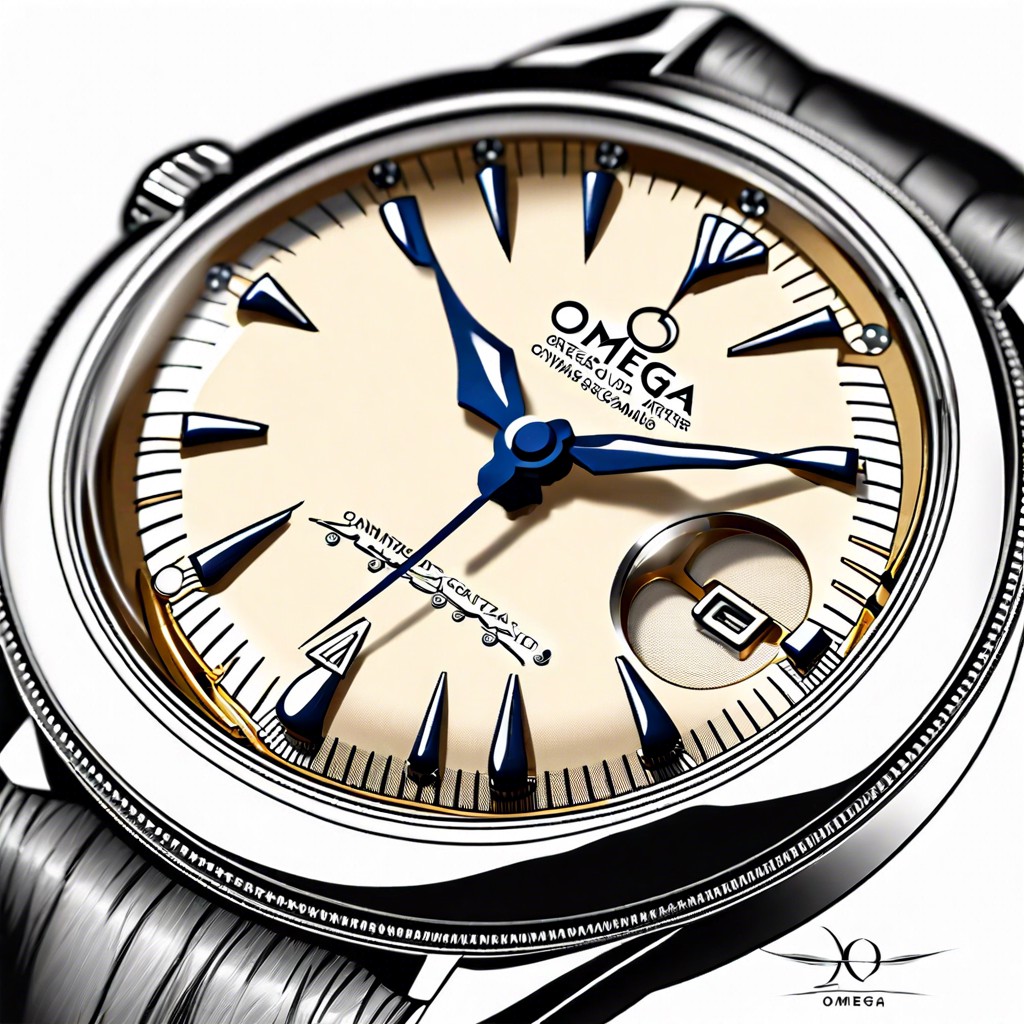Last updated on
Discover the key elements to consider when purchasing a vintage sweater, ensuring you choose a piece that is both authentic and stylistically enduring.
Key takeaways:
- Examine labels, wear, and construction for authenticity.
- Silhouette, color palettes, and patterns determine era.
- Popular brands include letterman, twinset, and cable knit.
- Vintage sweaters can be made from wool, cotton, or blends.
- Incorporate vintage sweaters into modern outfits with balance.
Historical Context of Sweater Fashion
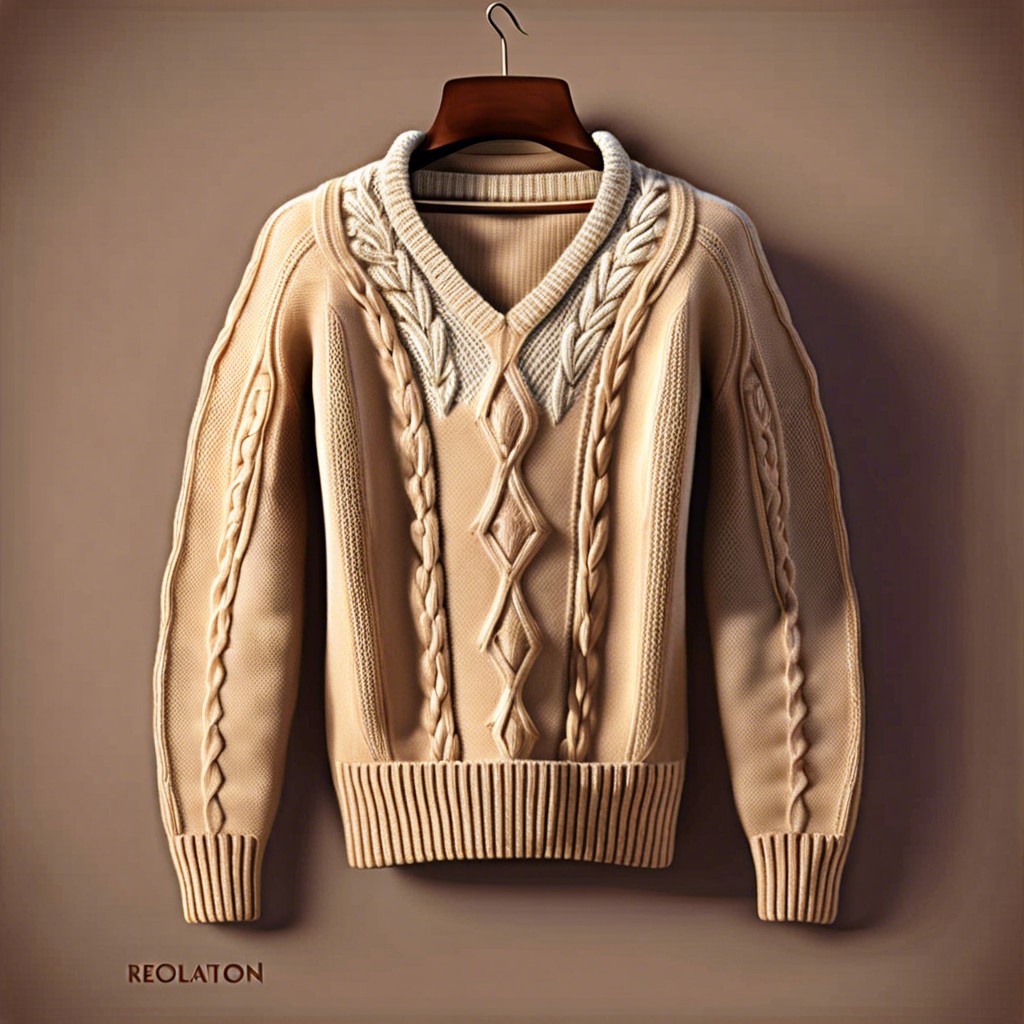
Sweater fashion has undergone significant transformations from its humble beginnings as utilitarian garments to its status as vintage fashion staples. Initially designed for warmth and comfort, sweaters were typically hand-knit, serving as practical attire for workers and fishermen, particularly in the UK and coastal regions known for their chilly climates.
The 1920s marked a turning point when the sweater began to be considered a fashion item, with the introduction of the iconic sweater vest. Fast forward to the 1950s and 1960s—this era brought the popularity of the preppy cardigan and the rebellious style of the tight-fitting sweater, symbolizing youth culture and the dawn of modern fashion awareness.
In the 1980s, the ‘statement’ sweater gained prominence. Bold patterns, vibrant colors, and oversized fits characterized the sweaters of this decade, reflecting the exuberant pop culture of the time. Meanwhile, the 1990s saw a rise in grunge-inspired knits, with thrifted sweaters becoming a signature part of the trend.
Each era added distinctive details to sweater designs, from the elaborate beading of the 1920s flapper influences to the punk-inspired rips and safety pins of the 1970s. These historical nuances are what make vintage sweaters a rich subject for collectors and fashion enthusiasts alike.
Identifying Authentic Vintage Sweaters

Examine labels for dates and country of origin, as modern garments often display more recent manufacturing locations. Tags also evolve in shape, color, and design over time, becoming a key determiner of period authenticity.
Research the manufacturer’s history. Brands change logos, tags, and labeling practices through different eras. Reference with company timelines can confirm the sweater’s age.
Inspect for signs of wear and construction techniques. Authentic vintage will often have natural wear in areas like the cuffs or pilling on the fabric, demonstrating true age. Handmade or older manufacturing techniques, like overlocked seams, indicate legitimacy.
Analyze the fit and silhouette. Fashion silhouettes reflect the prevailing aesthetics of their time, so an authentic vintage sweater will embody the fit and cut popular during its original era.
Study color palettes and patterns. Design trends are era-specific. For example, the vibrant, geometric patterns of the 1980s distinguish them from the pastel, preppy looks of the 1950s.
Popular Brands and Styles of Vintage Sweaters

The 1950s saw the rise of the iconic letterman sweater, synonymous with American high school culture. These sweaters remain sought-after for their nostalgia and Americana symbolism. During the same era, twinset sweaters, coupled with matching cardigans, were the embodiment of feminine sophistication and remain a staple in vintage fashion circles.
The ’70s introduced bold patterns and vibrant colors, reflective of the era’s experimental fashion. Brands like Coogi, recognized for their textured, multicolored knitwear, became popular during the ’80s and are still prized by collectors and fashion enthusiasts for their unique aesthetic.
In contrast, the preppy style of the 1980s popularized by brands like Lacoste and Ralph Lauren set the stage for the cable knit sweater’s perennial appeal. These garments, characterized by their intricately woven patterns and quality construction, anchor the vintage sweater market with a timeless elegance.
Beyond brand recognition, authentic vintage pieces from Scandinavian countries are cherished for their exquisite Nordic patterns and superior warmth. These sweaters, particularly Norwegian and Icelandic, are as functional as they are stylish, famed for their durability and insulation.
The grunge movement of the early ’90s breathed new life into thrift-store finds, making oversized, worn-in sweaters a counter-cultural statement that continues to influence the vintage sweater market.
Collectors today celebrate these styles for their rich history, distinctive designs, and the quality that has allowed them to stand the test of time.
Vintage Sweater Materials and Fabric Types
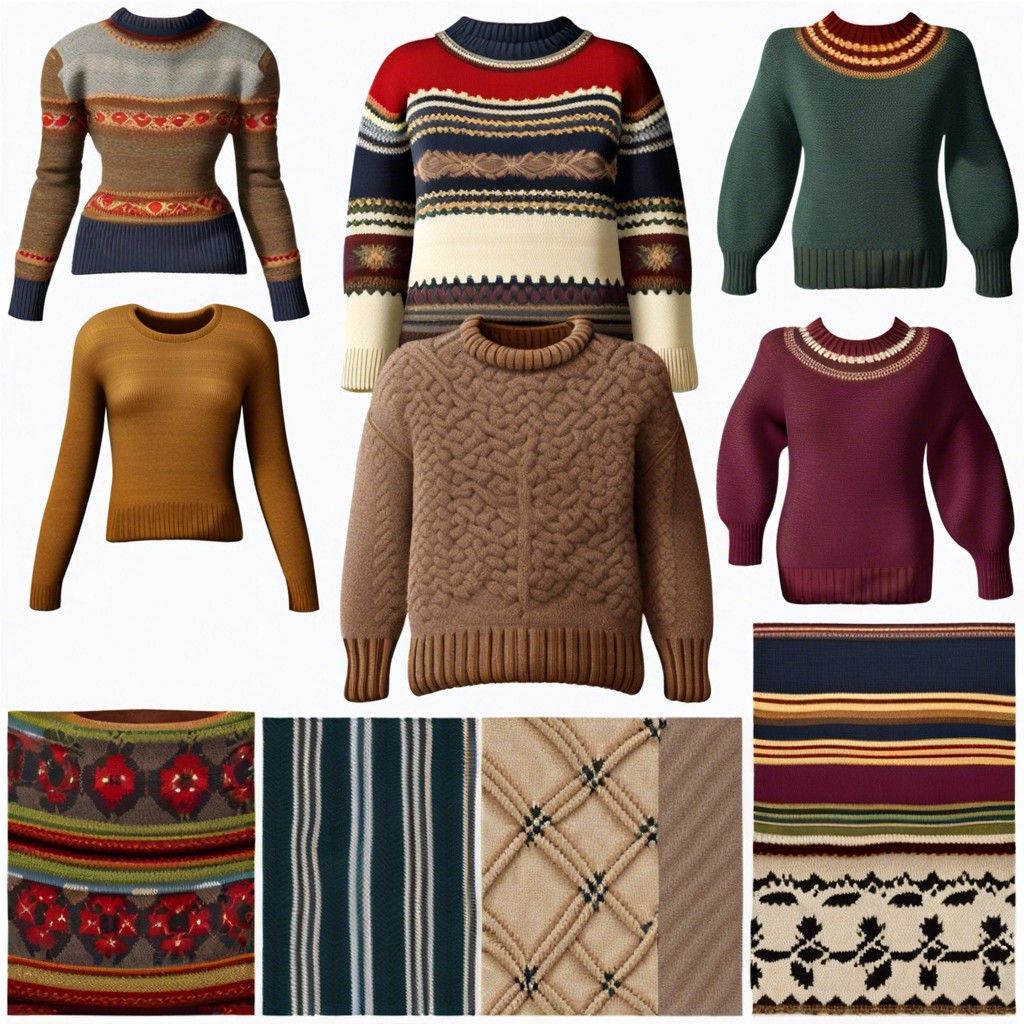
Natural fibers were the cornerstone of vintage sweaters, with wool leading as the most common material, prized for its warmth and durability. Merino, Shetland, and cashmere varieties offered different levels of softness and fineness. Cotton also featured prominently for its breathability, making it an ideal choice for lighter sweaters suitable for transitional weather or cooler summer evenings.
Synthetic fibers emerged prominently in the mid-20th century, introducing materials like acrylic and polyester into the sweater market. These fibers were celebrated for their easy maintenance and resistance to shrinkage, stretching, and moths, factors that have helped preserve many vintage pieces in excellent condition to this day.
Blends of natural and synthetic fibers were also common, combining the best properties of both materials. For instance, a wool-acrylic blend would often present a compromise between warmth, softness, and ease of care.
Understanding the specific materials and their properties can assist in proper care and maintenance, as well as in making informed purchasing decisions. It’s important to note that older materials may require more delicate handling; for instance, vintage wool can be more susceptible to felting if not washed carefully.
Incorporating Vintage Sweaters Into Modern Wardrobes

A well-chosen vintage sweater can introduce a unique twist to a contemporary outfit. Pairing a bold 80s geometric print with neutral modern basics creates a balance between retro and present-day style. Layering is savvy, using the sweater over a collared shirt underscores a preppy, timeless look.
For oversized or bulky knits, consider a cinched waist with a belt to define the silhouette. Dressing down a glam sweater (think sequins or metallic threads) with jeans and sneakers achieves a casual, yet eclectic vibe.
Care is equally important; a vintage sweater should be well-maintained to preserve its character. Always follow the care label or consult a professional if unsure.
Remember, the key is in blending eras seamlessly—integrating, not dominating, letting the vintage piece enhance rather than overwhelm your modern style choices.

